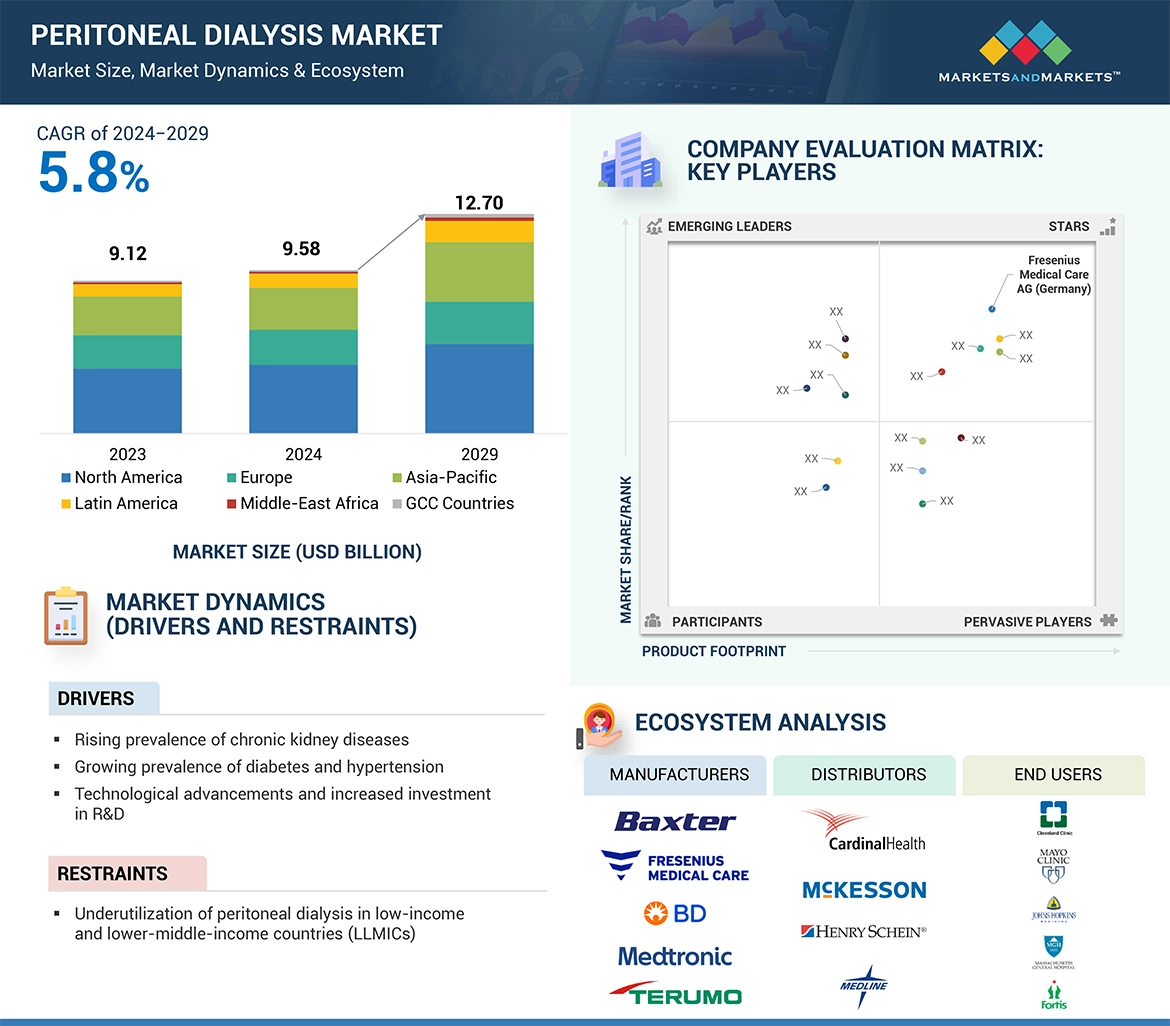
Download PDF Brochure
Market Overview
Peritoneal dialysis is a renal replacement therapy that utilizes the peritoneum in a patient's abdomen as a membrane across which fluids and dissolved substances are exchanged from the blood. This method is particularly beneficial for patients with end-stage renal disease (ESRD) and is gaining traction due to its advantages over traditional hemodialysis.
Growth Drivers
- Increasing Prevalence of Kidney Diseases: The rising incidence of chronic kidney diseases (CKD) globally is a primary driver for the peritoneal dialysis market. As more individuals are diagnosed with kidney-related ailments, the demand for effective treatment options like peritoneal dialysis is expected to rise.
- Technological Advancements: Innovations in dialysis technology, including automated peritoneal dialysis systems and improved dialysis solutions, are enhancing the efficiency and comfort of the treatment process, thereby attracting more patients.
- Patient Preference: Many patients prefer peritoneal dialysis due to its flexibility and the ability to perform the treatment at home, which can lead to a better quality of life compared to in-center hemodialysis.
- Government Initiatives and Support: Various governments and health organizations are promoting peritoneal dialysis as a viable treatment option, which is expected to boost market growth.
Request Sample Pages
Market Challenges
Despite the positive outlook, the peritoneal dialysis market faces challenges such as:
- Risk of Infections: Patients undergoing peritoneal dialysis are at risk of peritonitis and other infections, which can deter some patients from opting for this treatment.
- Training and Education: Adequate training for patients and caregivers is crucial for the successful implementation of peritoneal dialysis, and gaps in education can hinder market growth.
Conclusion
The global peritoneal dialysis market is on a growth trajectory, with a forecasted increase to USD 12.70 billion by 2029. The combination of rising kidney disease prevalence, technological advancements, and patient preference for home-based treatment options are key factors driving this growth. However, addressing the challenges associated with infection risks and the need for comprehensive training will be essential for maximizing the potential of this market. Stakeholders in the healthcare sector should remain vigilant and proactive in adapting to these trends to capitalize on the opportunities presented by this evolving landscape.